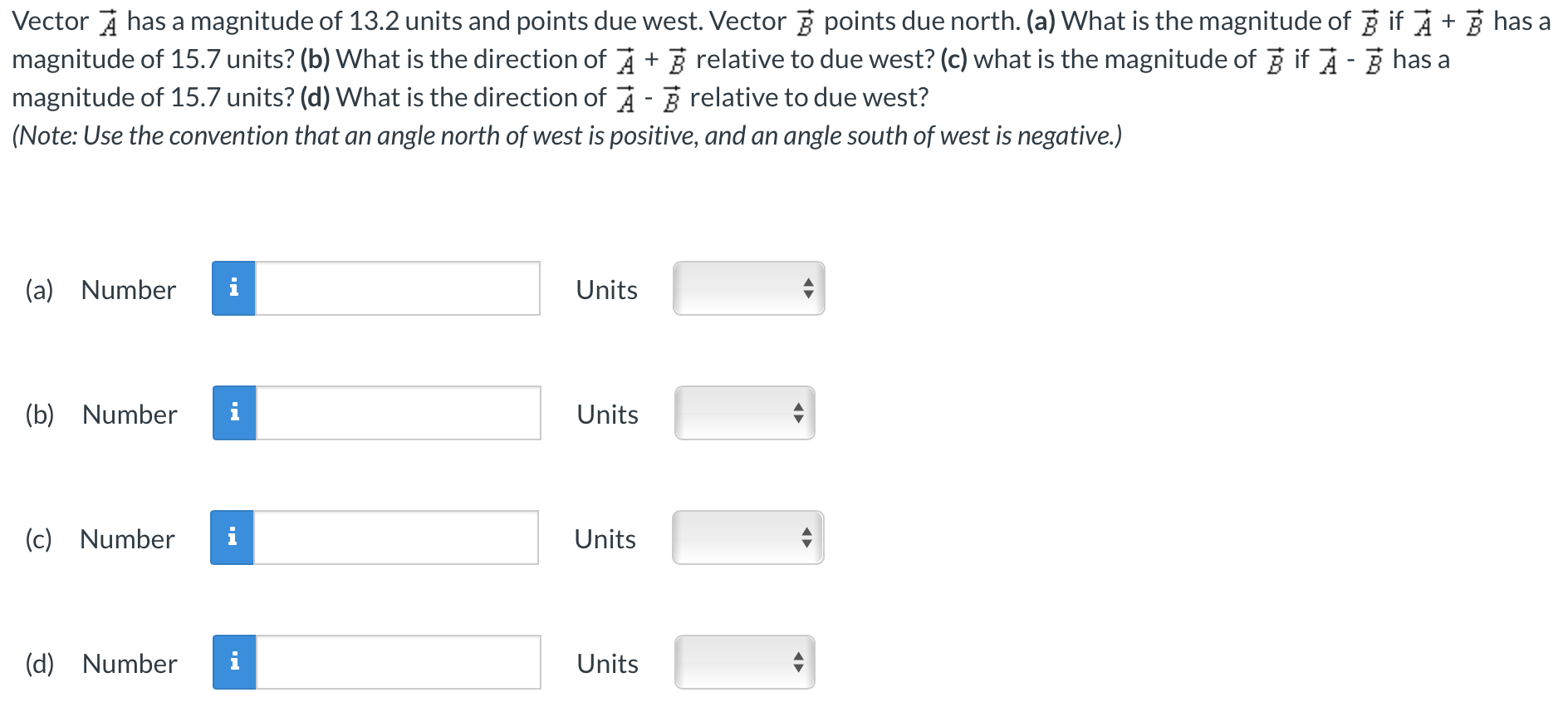Vector A→ has a magnitude of 13.2 units and points due west. Vector B→ points due north. (a) What is the magnitude of B→ if A→ + B→ has a magnitude of 15.7 units? (b) What is the direction of A→ + B→ relative to due west? (c) what is the magnitude of B→ if A→ − B→ has a magnitude of 15.7 units? (d) What is the direction of A→ − B→ relative to due west? (Note: Use the convention that an angle north of west is positive, and an angle south of west is negative.) (a) Number Units (b) Number Units (c) Number Units (d) Number Units
